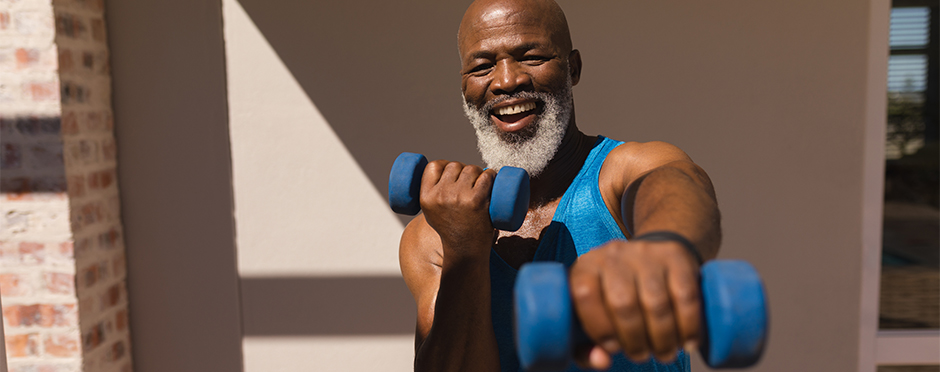
How To Build a New Year Workout Plan That You’ll Really Stick To
Leave a CommentBy some estimates, up to 95% of New Year’s resolutions are health or fitness oriented. Unfortunately, 43% of people abandon their goal after one month, and only 10% believe they will still be pursuing their health and fitness goals after three months.
You don’t have to be a rocket scientist to understand those are not good odds. So why do so many need help sticking to a New Year workout plan? The quick answer is found in the intention-behavior gap.
The Intention-behavior gap occurs when we have the best intentions for achieving a goal but never adapt behaviors to accomplish it. People genuinely want to accomplish something, but in the end, they don’t do it.
Research on the intention-behavior gap indicates that moving from intention to desired behaviors requires incorporating certain elements into goal planning. Consider using these four elements to build a New Year workout plan that you’ll actually stick to.
Enjoyment
Whatever your workout plan entails, it needs to be something you enjoy. Sounds obvious? It is, but far too often, workout plans are built around “the best” or “latest and greatest” new fads.
Ultimately, what’s best is doing what you enjoy the most. The fastest way to ensure failure for your workout plan is to center it on what’s considered the best and not what you enjoy. In reality, the best program is whatever you will stick to, which is usually what you enjoy.
When building your workout plan, don’t overanalyze what’s best. Instead, focus your workout plan on activities you enjoy doing. If you enjoy walking, swimming, dancing, hiking, playing sports, or other physical activity, make these the foundation of your plan.
High Potential
Many goals crash and burn because their scope was too large, and there was no ending point. Achieving a goal has a much higher potential for success if the goal is reasonable and has an ending point.
This element is frequently used with children. When kids start playing baseball, they don’t immediately face a professional pitcher throwing 100+ heat. Instead, kids learn to hit off a tee and progress to harder-hitting situations as their skill develops. Their scope is small, with a defined ending point.
The same idea can be implemented with our workout plans. Creating small, easy wins develops momentum. When momentum builds, habits start, and when habits grow roots, behavior change occurs.
When building your workout plan, start with small, reasonable goals with a defined ending point. Setting yourself up for success will create an environment that leads to consistency and longevity.
Substitute
New goals can be burdensome as they become an additional task on an already long list of daily to-do’s. When time becomes scarce, the newest member of the list often gets cut.
It is often best to replace an old task or habit with a new one to move from intention to behavior. For example, instead of the old habit of watching T.V. right when you wake up, replace that with a new habit of performing your workout plan.
This method will help you reduce the likelihood that your daily tasks become unmanageable and create intentional space and time to complete the new task. You don’t need to add when you can substitute.
When developing your workout plan, substitute an older, less valuable habit with your new one. This will increase your ability to stick to it over the long run.
Understand Your Why
As mentioned, New Year’s health goals are extremely popular, but why? Too often, the reason for new goals boils down to “should.” We should be healthier, so we should make a health goal this year.
While we do need to be healthier as a society, the reason for starting a new workout plan needs to be stronger than “should”. Building a goal on a well-rounded understanding of why versus should create a strong connection to the goal and is the anchor that holds you still when the storms come through.
When developing your workout plan, clarify, capture, and frequently review the reason or reasons why this workout plan is something you desire to do.
The Workout Plan
When you develop a New Year workout plan with the elements of enjoyment, high potential for success, substituting old habits for new ones, and understanding your why, you will significantly increase your likelihood of actually sticking to your workout plan in 2023. With these elements, you can move from intention to action.
If pain is stopping you from participating in a New Year’s workout plan, contact your nearest Athletico for a free assessment. Free Assessments are available in clinic or virtually through our Telehealth platform.
*Per federal guidelines, beneficiaries of plans such as Medicare, Medicaid, Tricare, VHA and other federally funded plans are not eligible for free assessments.
The Athletico blog is an educational resource written by Athletico employees. Athletico bloggers are licensed professionals who abide by the code of ethics outlined by their respective professional associations. The content published in blog posts represents the opinion of the individual author based on their expertise and experience. The content provided in this blog is for informational purposes only, does not constitute medical advice and should not be relied on for making personal health decisions.
References:
1. “Research Shows 43% of People Expect to Give up Their New Year’s Resolutions by February.” Sundried, https://www.sundried.com/blogs/training/research-shows-43-of-people-expect-to-give-up-their-new-year-s-resolutions-by-february.
